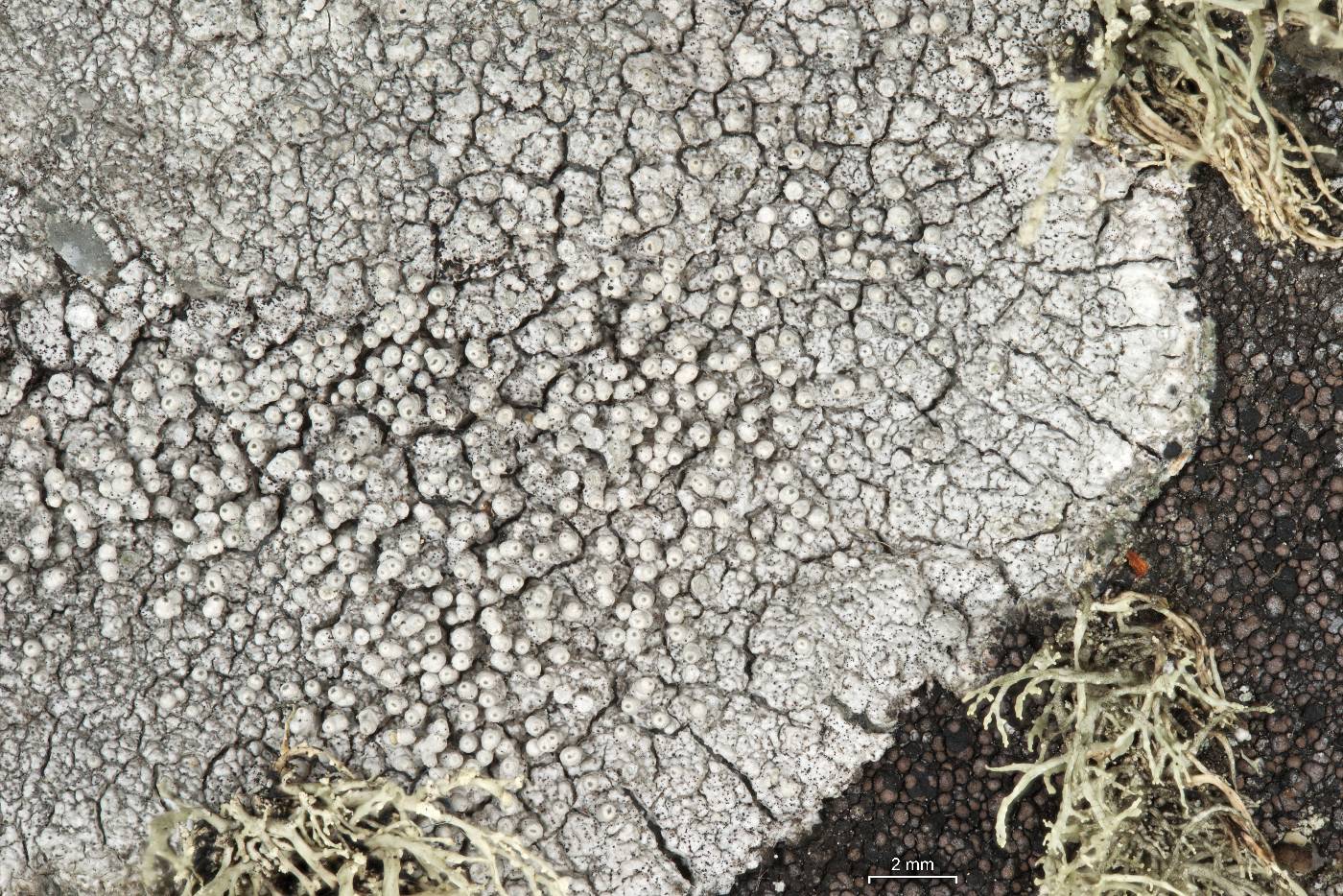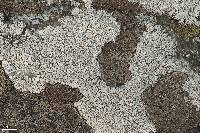
- Home
- Search
- Images
- Species Checklists
- US States: O-Z >
- US National Parks
- Central America
- South America
- US National Parks
- Southern Subpolar Region
|
|
|
|
Family: Ochrolechiaceae
Glady's Mountain Spikes
[Pertusaria andersoniae Lendemer, morePertusaria andersonii Lendemer [orth. error]] |
Assessed as Endangered B1ab(iii)+2ab(iii), ver 3.1; date assessed: August 6, 2020
DOWNLOAD full IUCN Assessment as PDF Common name(s): English: Gladys' Mountain Spikes ASSESSMENT JUSTIFICATION [criteria: B1ab(iii)+2ab(iii)] Lepra andersoniae has a limited Extent of Occurrence (4,027 km2) and Area of Occupancy (16 km2), alimited number of locations (3), and there are ongoing declines in habitat quality inferred from thelarge-scale changes to southern Appalachian spruce-fir ecosystems as a result of changing climate and environmental conditions. The species occurs in highly visited areas and may be threatened by recreation either directly through trampling/damage to rock habitats, or indirectly through expansion or improvement of recreation infrastructure. Therefore, it is listed as Endangered under criteriaB1ab(iii)+2ab(iii). Assessor/s: Lendemer, J.; Reviewer/s: McMullin, T.; Facilitator(s) and Compiler(s): Chandler, A. & Allen, J. Bibliography: Allen, J.L. & Lendemer, J.C. (2016) Climate change impacts on endemic, high-elevation lichens in abiodiversity hotspot. Biodiversity and Conservation 25(3): 555-568. Bachman, S., Moat, J., Hill, A.W., de la Torre, J. & Scott, B. (2011) Supporting Red List threat assessments with GeoCAT: geospatial conservation assessment tool. In: V. Smith and L. Penev (eds) e-Infrastructures for data publishing in biodiversity science. Zookeys 150: 117–126. Culatta, K.E. and Horton, J.L. (2014) Physiological Response of Southern Appalachian High-Elevation Rock Outcrop Herbs to Reduced Cloud Immersion. Castanea 79: 182-194. IUCN (2020) The IUCN Red List of Threatened Species. Version 2020-3. Available at: www.iucnredlist.org. (Accessed: 10 December 2020). Keyser, T., Malone, J., Cotton, C. & Lewis, J. (2014) Outlook for Appalachian-Cumberland Forests: A Subregional Report from the Southern Forest Futures Project. General Technical Report, Southern Research Station (SRS-18). U.S. Department of Agriculture; Forest Service (USDA-FS), Asheville, NC. Lendemer, J.C., Anderson Stewart, C.R., Besal, B., Goldsmith, J., Griffith, H., Hoffman, J.R., Kraus, B., LaPoint, P., Li, L. Muscavitch, Z., Schultz, J., Schultz, R. & Allen, J.L. (2017) The lichens and allied fungi of Mount Mitchell State Park, North Carolina: A first checklist with comprehensive keys and comparison tohistorical data. Castnea 82: 69-97. Rollins, A.W., Adams, H.S. & Stephenson, S.L. (2010) Changes in forest composition and structure across the red spruce-hardwood ecotone in the central Appalachians. Castanea 75: 303–314. Rose, A. & Nicholas, N. S. 2008. Coarse woody debris in a Southern Appalachian spruce-fir forest of the Great Smoky Mountains National Park. Natural Areas Journal 28: 342-355. White, P.B., S.L. van de Gevel, & P. T. Soulé (2012) Succession and disturbance in an endangered redspruce-Fraser fir forest in the southern Appalachian Mountains, North Carolina, USA. Endangered Species Research 18: 17-25. Find out more about the IUCN Red List Categories and Criteria here. |













